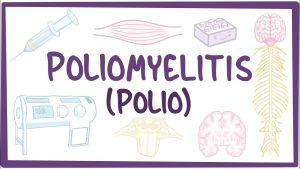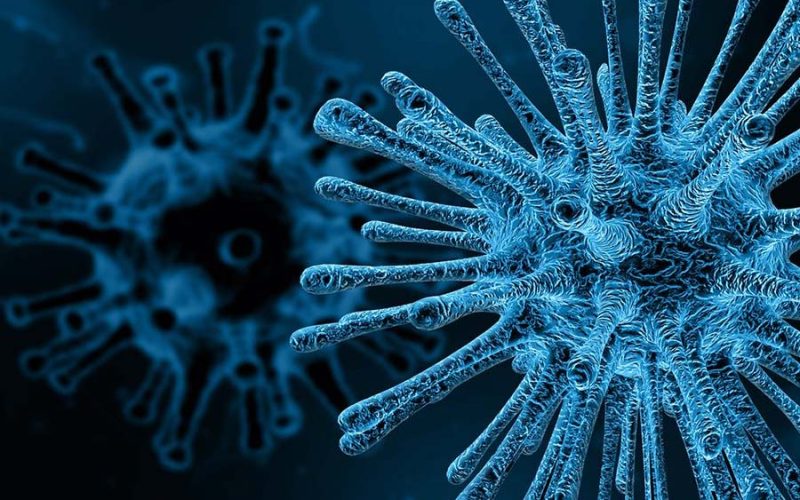Understanding Poliovirus Transmission
Poliovirus, a highly contagious virus that primarily spreads through person-to-person contact, can also find its way into water sources. The transmission of poliovirus through water occurs mainly through the fecal-oral route, meaning it enters the body through contaminated water or food. While significant progress has been made in eradicating Poliovirus in Water through vaccination programs, the risk of waterborne transmission remains a concern in certain regions. Explore More About Human Health (Soothing Trembling hands solution)
Sources of Contamination
Poliovirus can contaminate water sources through various means, including:
1. Sewage Discharge:
- In areas with inadequate sanitation infrastructure, untreated sewage can find its way into rivers, lakes, and groundwater, potentially carrying poliovirus with it.
2. Poor Hygiene Practices:
- Improper disposal of feces or lack of handwashing after using the toilet can introduce poliovirus into the environment, leading to water contamination.

3. Agricultural Runoff:
- Fecal matter from livestock or untreated manure used as fertilizer can wash into water bodies during rain events, contributing to the contamination of surface water.
Factors Affecting Poliovirus Survival in Water
Several factors influence the survival and persistence of poliovirus in water:
1. Temperature:
- Warmer temperatures can prolong the survival of poliovirus, increasing the risk of transmission during the summer months.
2. pH Levels:
- Poliovirus tends to survive better in neutral to slightly alkaline environments, with pH levels between 6 and 8 favoring its persistence.
3. Presence of Organic Matter:
- Organic material in water, such as decaying vegetation or animal waste, can provide nutrients that support the survival of poliovirus.
4. Sunlight Exposure:
- Ultraviolet (UV) radiation from sunlight can help inactivating poliovirus reducing its viability over time.
Health Risks Associated with Poliovirus Contamination
Exposure to poliovirus-contaminated water can pose significant health risks, especially in areas with low vaccination coverage. The following are potential consequences of poliovirus infection:
1. Poliomyelitis (Polio):
- Poliovirus can cause polio, a highly infectious disease that primarily affects young children. Polio can lead to paralysis, respiratory failure, and, in severe cases, death.

2. Secondary Infections:
- In addition to polio, waterborne transmission of poliovirus can contribute to the spread of other waterborne diseases, such as gastroenteritis and hepatitis.
3. Impact on Public Health:
- Outbreaks of polio or other waterborne illnesses can strain healthcare systems, particularly in resource-limited settings, leading to increased morbidity and mortality rates.
Preventive Measures and Control Strategies
To mitigate the risk of poliovirus contamination in water and prevent outbreaks, various preventive measures and control strategies can be implemented:
1. Vaccination Programs:
- Routine immunization with the polio vaccine is essential to maintain population immunity and prevent the spread of poliovirus.
2. Water Treatment:
- Implementing water treatment methods, such as filtration, chlorination, and ultraviolet disinfection, can help remove or inactivate poliovirus in drinking water supplies.
3. Sanitation Improvements:
- Investing in improved sanitation infrastructure, including proper sewage treatment and waste management systems, can reduce the likelihood of poliovirus contamination in water sources.
4. Hygiene Promotion:
- Promoting good hygiene practices, such as handwashing with soap and safe disposal of feces, can minimize the risk of fecal-oral transmission of poliovirus.
5. Surveillance and Monitoring:
- Regular surveillance of water quality and monitoring of poliovirus circulation in communities can enable early detection of outbreaks and prompt implementation of control measures.
Poliovirus Transmission Routes
| Transmission Route | Description | Risk of Poliovirus Transmission |
|---|---|---|
| Person-to-Person | Direct contact with infected individuals or their secretions | High |
| Waterborne | Ingestion of contaminated water or food | Moderate |
| Fecal-Oral | Consumption of fecally contaminated substances | High |
Conclusion
While the risk of poliovirus transmission through water remains a concern, effective preventive measures and control strategies can help mitigate this risk and protect public health. By prioritizing vaccination, improving sanitation, promoting hygiene practices, and implementing robust water treatment systems, communities can reduce the likelihood of poliovirus contamination and minimize the impact of waterborne diseases. Vigilance, collaboration, and sustained efforts are essential to ensure continued progress towards the global eradication of poliovirus and the protection of vulnerable populations.










